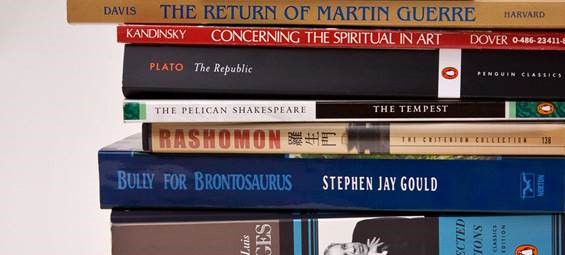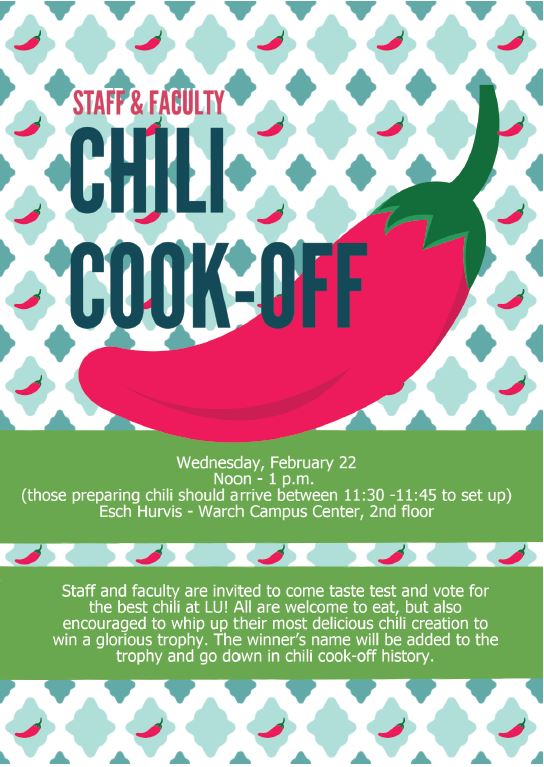Hear the career paths of various Lawrence alumni, including financial advisor/co-founder of LBW Wealth Management Timothy Bickmore ’11; associate consultant at McKinsey & Company Andrew Wong ’06; and executive vice president at CBRE: Commercial Real Estate Services William Bonifas ’78. Visit LUworks to register for the 9:30 a.m. Lawrence Scholars in Business panel, the 11:30 a.m. lunch and 1:1 chats in the afternoon.
Category: My Department
Construction near library
You may have noticed the parking areas by Mudd Library have been blocked off this week to make room for two cranes to work on the library chiller project. One crane has been set up at the west end of the area by the fountain, while the other has been on the Lawe Street side of the library. There should be enough room to carefully turn around in the south entrance.
If you have any questions or need more information, please contact the facility services office at 920-832-6602.
It’s On Us Week of Action
Please join SHARE, SAASHA and WELLU in Lawrence’s It’s On Us Week of Action Feb. 13–17 to support awareness of and help prevent sexual assault.
The week’s events include:
Monday (Feb. 13): Kickoff
7 p.m.: The Hunting Ground followed by SHARE
discussion, Mead Witter
Storm the Dorm: sign the pledge in your residence hall
and prevent sexual assault
Tuesday (Feb. 14): “What is Consent?”
Find us all across campus and let us know what
consent means to you
5:30 p.m.: Show your support at women’s and men’s
basketball games, Alexander Gym
Wednesday (Feb. 15): Survivor Support
Day
Wear teal in support of sexual assault survivors
8 p.m.: SAASHA Survivor Support meeting, Drahiem
Thursday (Feb. 16): Be More than a
Bystander
7 p.m.: Bystander training, Cinema
Friday (Feb. 17): “Let’s Talk about Sex”
4:30 p.m.: Consent and Communication discussion with
Kim Jones, Title IX coordinator, Main Hall 203
Check out It’s On Us for more information on the initiative. And visit our It’s on LU calendar of events! http://www.lawrence.edu/students/share/get-involved
Feb. 23: Applying the Rethinking Mentoring Model

Lawrence faculty members are invited to “Phase II” of the Rethinking Mentoring series.
Applying the Rethinking Mentoring Model
Thursday, Feb. 23
11 a.m.–12:30 p.m.
Lunch will be provided
Esch Hurvis Room
This session is designed to provide an opportunity for Lawrence faculty to discuss how to apply various aspects of the mentoring model developed by the National Center for Faculty Development & Diversity (NCFDD) on our campus.
Please RSVP to michelle.l.lasecki-jahnke@lawrence.edu by Friday, Feb. 17.
Student Book Fund crowdfunding campaign

Did you know studies show students are spending $800–$1,200 a year on books? For some students who are in the most financial distress, this means they are unable to purchase textbooks. Join alumni, parents, faculty and staff in supporting our Student Book Fund to ensure all our students can purchase materials for their classes. Give online today.
New hires and job changes: Feb. 16
The following colleagues have been hired, rehired or have a new position within the last two weeks. If you see them on campus, please welcome them to Lawrence or congratulate them on their new position!
- Kathleen Allison, assistant director of alumni and constituency engagement (Development)
- Nathan Harder, assistant men’s and women’s track and field coach (Athletics)
- Casey Schneider, campus safety officer (Campus Services)
- Megan Spranger, associate director of major and planned giving (Development)
- Jenna Villiesse, assistant softball coach (Athletics)
Feb. 21 Seniors: Support, Strategies and Success (S4): LinkedIn and Social Media
Do you have an online brand? LU Social Media Director Kasey Corrado joins the next S4 to show you how to successfully use LinkedIn and other social media platforms to get your career started. The session runs from 11:10 a.m. to noon in the Warch Campus Center’s Runkel Room. Registration in LUworks is appreciated.
Blood pressure checks
Want a quick check of your blood pressure? Stop in to see Laurie Ehlers, RN CDE, at one of our upcoming blood pressure screening clinics. No appointment necessary.
Tuesday, Feb. 21
Kraemer Conference Room at Warch Campus Center
11 a.m.–1 p.m.
Tuesday, Feb. 28
Lower lobby at the Con
1–3 p.m.
Feb. 22: Staff & faculty chili cook-off

Careers at Lawrence
Take a look at our current openings and share with those you think may be a great addition to the Lawrence community!
Summer employment recruiting is in full swing! Please be sure to visit LUworks or the human resources page for a listing of available opportunities and for specific application instructions. Interviewing has already started and job offers will begin to go out shortly!
